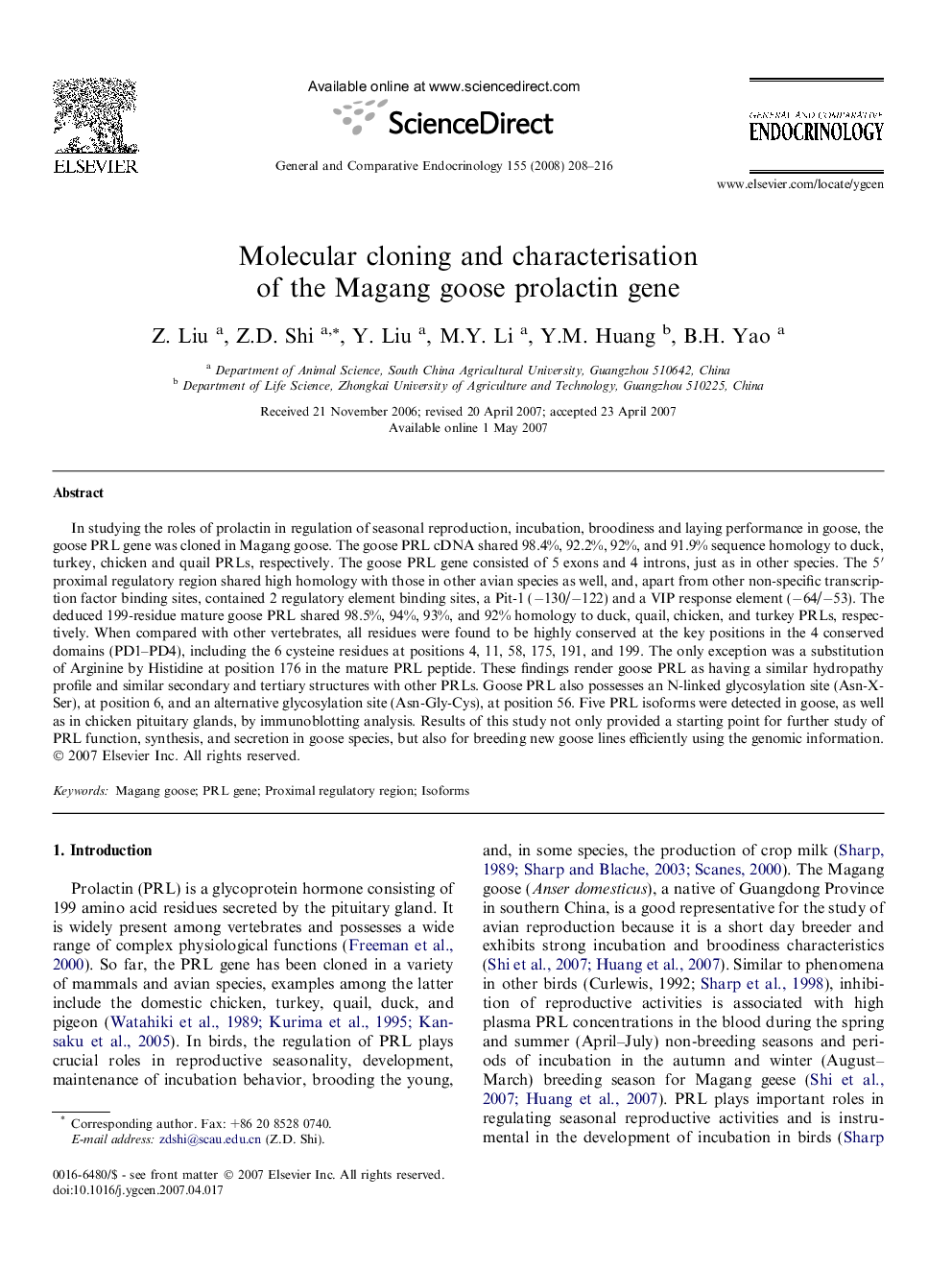| کد مقاله | کد نشریه | سال انتشار | مقاله انگلیسی | نسخه تمام متن |
|---|---|---|---|---|
| 2801894 | 1156179 | 2008 | 9 صفحه PDF | دانلود رایگان |

In studying the roles of prolactin in regulation of seasonal reproduction, incubation, broodiness and laying performance in goose, the goose PRL gene was cloned in Magang goose. The goose PRL cDNA shared 98.4%, 92.2%, 92%, and 91.9% sequence homology to duck, turkey, chicken and quail PRLs, respectively. The goose PRL gene consisted of 5 exons and 4 introns, just as in other species. The 5′ proximal regulatory region shared high homology with those in other avian species as well, and, apart from other non-specific transcription factor binding sites, contained 2 regulatory element binding sites, a Pit-1 (−130/−122) and a VIP response element (−64/−53). The deduced 199-residue mature goose PRL shared 98.5%, 94%, 93%, and 92% homology to duck, quail, chicken, and turkey PRLs, respectively. When compared with other vertebrates, all residues were found to be highly conserved at the key positions in the 4 conserved domains (PD1–PD4), including the 6 cysteine residues at positions 4, 11, 58, 175, 191, and 199. The only exception was a substitution of Arginine by Histidine at position 176 in the mature PRL peptide. These findings render goose PRL as having a similar hydropathy profile and similar secondary and tertiary structures with other PRLs. Goose PRL also possesses an N-linked glycosylation site (Asn-X-Ser), at position 6, and an alternative glycosylation site (Asn-Gly-Cys), at position 56. Five PRL isoforms were detected in goose, as well as in chicken pituitary glands, by immunoblotting analysis. Results of this study not only provided a starting point for further study of PRL function, synthesis, and secretion in goose species, but also for breeding new goose lines efficiently using the genomic information.
Journal: General and Comparative Endocrinology - Volume 155, Issue 1, 1 January 2008, Pages 208–216